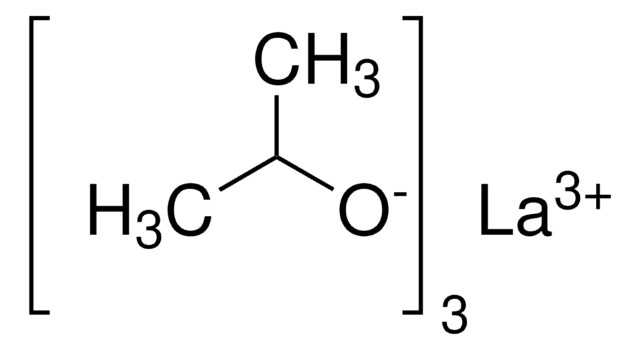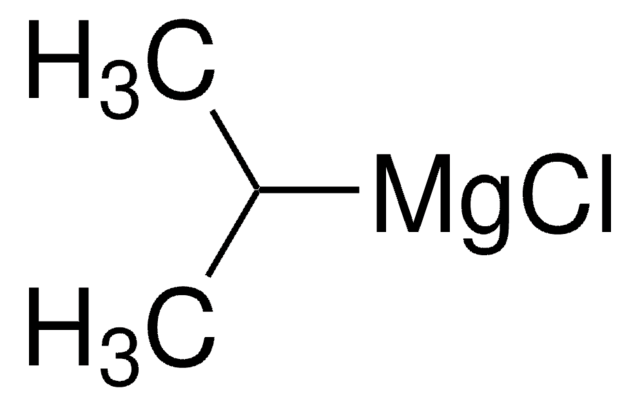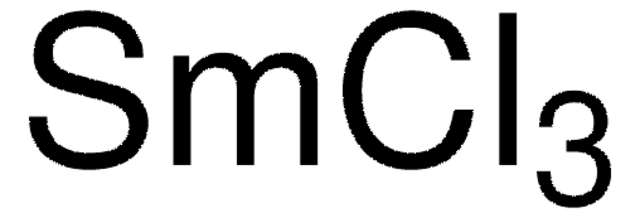703559
Lanthanum(III) chloride bis(lithium chloride) complex solution
0.6 M in THF
Synonym(s):
Lanthanum trichloride lithium chloride complex
About This Item
Recommended Products
form
liquid
Quality Level
reaction suitability
reagent type: catalyst
core: lanthanum
concentration
0.6 M in THF
16 % (w/w)
density
1.05 g/mL at 25 °C
SMILES string
[Li]Cl.[Li]Cl.Cl[La](Cl)Cl
InChI
1S/5ClH.La.2Li/h5*1H;;;/q;;;;;+3;2*+1/p-5
InChI key
YSKOYVQYUJUXCN-UHFFFAOYSA-I
Related Categories
Application
- Mediates Grignard additions
- Reagent for metal exchange reactions
- Promoter for the addition of organometallic compounds to sterically hindered, enolizable or α,β-unsaturated ketones or imines
Legal Information
Signal Word
Danger
Hazard Statements
Precautionary Statements
Hazard Classifications
Acute Tox. 4 Oral - Aquatic Chronic 3 - Carc. 2 - Eye Dam. 1 - Flam. Liq. 2 - Met. Corr. 1 - Skin Sens. 1 - STOT SE 3
Target Organs
Central nervous system, Respiratory system
Supplementary Hazards
Storage Class Code
3 - Flammable liquids
WGK
WGK 2
Flash Point(F)
62.6 °F
Flash Point(C)
17 °C
Personal Protective Equipment
Regulatory Listings
Regulatory Listings are mainly provided for chemical products. Only limited information can be provided here for non-chemical products. No entry means none of the components are listed. It is the user’s obligation to ensure the safe and legal use of the product.
PRTR
Class I Designated Chemical Substances
FSL
Group 4: Flammable liquids
Type 1 petroleums
Hazardous rank II
Water insoluble liquid
ISHL Indicated Name
Substances Subject to be Indicated Names
ISHL Notified Names
Substances Subject to be Notified Names
JAN Code
703559-BULK:
703559-4X25ML:4548173915159
703559-25ML:4548173915142
703559-100ML:4548173295893
703559-VAR:
Choose from one of the most recent versions:
Already Own This Product?
Find documentation for the products that you have recently purchased in the Document Library.
Customers Also Viewed
Articles
While the 1,2-addition of Grignard reagents to ketones is undoubtedly a powerful transformation, oftentimes selectivity issues arising from competitive alpha-deprotonation detract from the use of these reagents.
Sigma-Aldrich.com presents an article concerning New Reagents for Selective Metalation, Deprotonation, and 1,2-Additions.
Transformative reagents for selective metalation, deprotonation and nucleophilic additions have allowed for unprecedented selective converstions to reactive intermediates within a molecule which contains sensative functionalities under mild reactions.
Global Trade Item Number
| SKU | GTIN |
|---|---|
| 561673-50ML | 4061838128362 |
| 703559-25ML | 4061837768132 |
| 703559-4X25ML | 4061837768149 |
| 703559-100ML | 4061838129079 |
Our team of scientists has experience in all areas of research including Life Science, Material Science, Chemical Synthesis, Chromatography, Analytical and many others.
Contact Technical Service

















